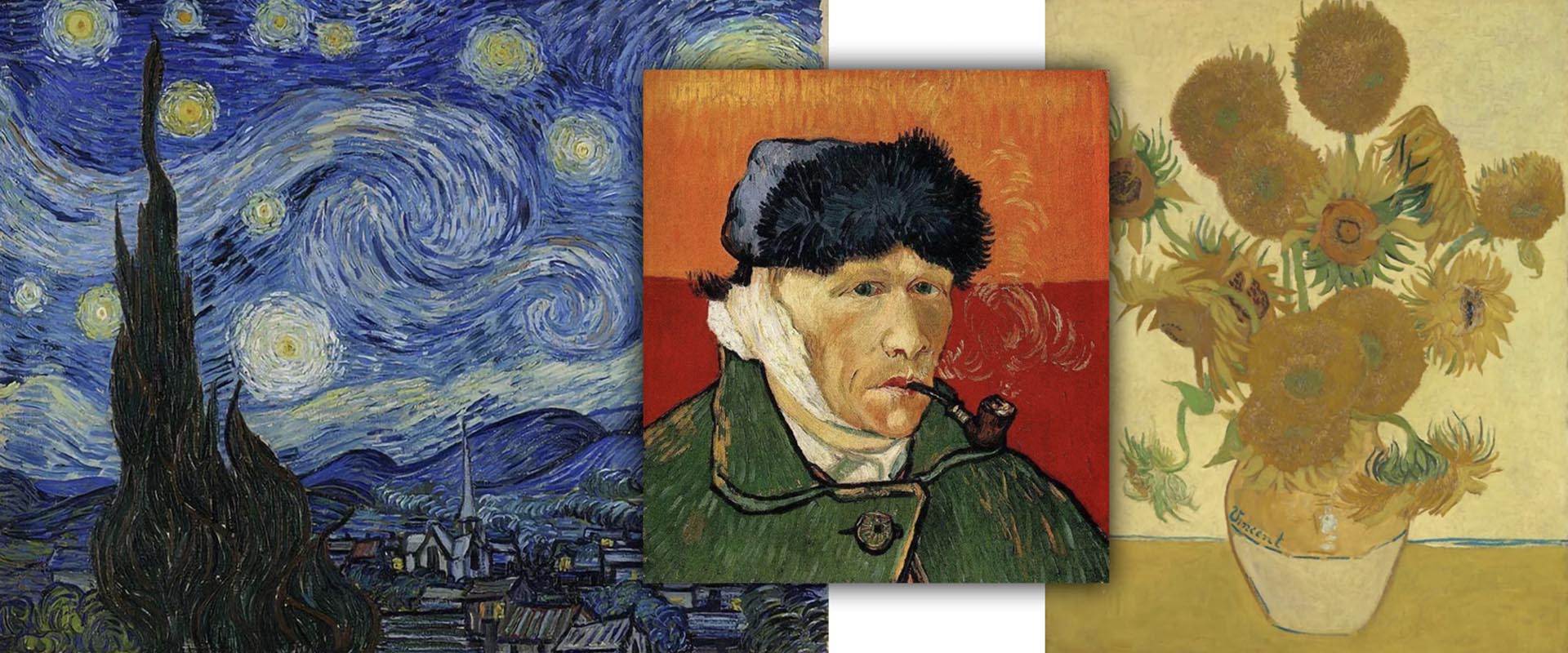When we think of Post-Impressionism, one name often rises above the rest: Vincent van Gogh. His emotionally charged brushwork, vibrant colors, and raw visual language set him apart—not just from his contemporaries but from nearly every artist before him. But what exactly is Post-Impressionism, and how did Van Gogh help shape it?
In this article, we’ll dive into the world of Post-Impressionism, define its core elements, and explore Van Gogh’s artistic legacy in detail—an artist who redefined what it meant to paint with feeling.
What Is Post-Impressionism?
A Movement Beyond the Moment
Post-Impressionism emerged in the late 19th century as a response to Impressionism. While Impressionists like Monet and Renoir focused on capturing fleeting moments of light and life, Post-Impressionists went deeper—exploring emotion, symbolism, and personal meaning.
Key traits of Post-Impressionism include:
- Bold color use not limited to realistic tones
- Structural composition and form over spontaneity
- Symbolic content and deeper emotional narratives
- Distinctive personal styles (rather than a unified aesthetic)
Artists like Paul Cézanne, Paul Gauguin, Georges Seurat, and Vincent van Gogh each took these principles in their own direction—making the movement rich and diverse.
Van Gogh’s Place in Post-Impressionism
From Realism to Raw Emotion
Vincent van Gogh didn’t initially set out to be a revolutionary. His early works were grounded in dark realism, such as The Potato Eaters (1885). However, everything changed after his exposure to Impressionism and Japanese art in Paris.
From there, Van Gogh began to develop his own unique voice—one marked by:
- Swirling, expressive brushstrokes
- A palette of vivid, emotionally charged colors
- Deeply personal subject matter, from fields and flowers to self-portraits
Though often categorized under Post-Impressionism, Van Gogh defied stylistic boundaries, making his work both timeless and intensely human.
Techniques That Defined Van Gogh’s Art
1. Color as Expression
Van Gogh once wrote, “Instead of trying to reproduce exactly what I see before me, I make more arbitrary use of color.” And he meant it. He used color to evoke emotion:
- Yellow symbolized light, hope, and sometimes madness
- Blue conveyed calm, sorrow, or spiritual depth
- Red and green added contrast and intensity
In The Bedroom (1888), for instance, colors aren’t realistic—they’re expressive, chosen to portray peace, warmth, and comfort.
2. Brushwork That Moved with Feeling
Rather than delicate touches, Van Gogh employed:
- Thick impasto paint (he sometimes squeezed straight from the tube)
- Dynamic, rhythmic strokes that seemed to pulse with emotion
- Circular motion, as famously seen in Starry Night (1889)
This approach created a visceral, almost tactile energy in his canvases.
3. Subjects Infused with Meaning
Even everyday scenes—like sunflowers in a vase—held emotional depth for Van Gogh. His favorite subjects included:
- Nature: Wheatfields, cypress trees, and skies that reflected his mood
- People: Farmers, laborers, and introspective self-portraits
- Still Life: Carefully arranged yet deeply symbolic works
Did Van Gogh Have Formal Training?
Van Gogh’s journey as an artist was largely self-guided. Though he briefly attended academies in Brussels and Antwerp, his growth came through practice, observation, and correspondence, especially with his brother Theo.
He studied:
- The works of Rembrandt, Millet, and Japanese ukiyo-e artists
- Nature through sketches and plein air painting
- Color theory and emotional symbolism on his own terms
This combination of raw talent and relentless study helped him build a style unmatched in its emotional honesty.
The Evolution of His Style
Early Period: Realism and Earth Tones
Works like The Potato Eaters reflect a somber, grounded realism—dark palettes, thick outlines, and serious tone.
Paris Period: Color and Light
After moving to Paris in 1886, he encountered Impressionism and Japanese prints. His art became brighter, more experimental. He painted urban scenes, still lifes, and floral arrangements.
Arles and Beyond: Full Expression
The most iconic period of his work began in Arles, where he painted:
- Sunflowers (1888): Vibrant, lively still lifes
- The Yellow House (1888): A dream of artistic community
- Starry Night (1889): A fusion of imagination and observation
During this time, Van Gogh painted nearly a canvas a day, pouring his soul into his art.
Van Gogh’s Influence on Modern Art
Legacy Beyond the Canvas
Though Van Gogh died in 1890 with little recognition, his legacy grew posthumously—and explosively.
He influenced entire movements, including:
- Expressionism: Artists like Edvard Munch adopted Van Gogh’s emotive style
- Fauvism: Matisse and Derain built upon his bold color use
- Abstract art: His departure from realism paved the way for 20th-century innovation
Today, Van Gogh’s Post-Impressionism is considered a turning point in art history, bridging the gap between traditional technique and modern emotion.
Where to See and Celebrate His Work
Looking to explore Van Gogh’s world at home? Visit our Vincent van Gogh wall art collection to bring iconic pieces like Starry Night or Almond Blossoms into your space.
You’ll find museum-quality prints that echo his spirit and expressive genius—perfect for anyone who appreciates bold, meaningful art.
Conclusion
Post-Impressionism wasn’t just a shift in technique—it was a transformation of how art could feel. And no one embodied that more than Vincent van Gogh. With passionate brushwork, fearless color choices, and a soul laid bare on canvas, Van Gogh turned pain into poetry and changed the course of art forever.
His legacy reminds us that art doesn’t have to be perfect—it just has to be true.





